Creation Narratives and the Evolution Creationist Debate
 Creation
narratives, or creation myths, are collections of stories that attempt to answer truly fundamental
questions like where do we come from. Long before scientific discovery,
human beings set out to answer questions about the sun and the moon with
elaborate stories. These stories were passed down usually by a shaman or holy
man and each generation passed the story on to the next generation orally
because language in most early civilizations was spoken. The
written word didn't surface until the ancient Egyptian civilization and the use
of hieroglyphic writing. Division among religious people has occurred where one
group believes that the Book of Genesis is historical fact where others see it
as a metaphorical depiction. From a
historical perspective, the Book of Genesis is a creation myth and not an actual
depiction of the beginning of the universe. Creation
narratives, or creation myths, are collections of stories that attempt to answer truly fundamental
questions like where do we come from. Long before scientific discovery,
human beings set out to answer questions about the sun and the moon with
elaborate stories. These stories were passed down usually by a shaman or holy
man and each generation passed the story on to the next generation orally
because language in most early civilizations was spoken. The
written word didn't surface until the ancient Egyptian civilization and the use
of hieroglyphic writing. Division among religious people has occurred where one
group believes that the Book of Genesis is historical fact where others see it
as a metaphorical depiction. From a
historical perspective, the Book of Genesis is a creation myth and not an actual
depiction of the beginning of the universe.
What is a
Creation
Narrative?
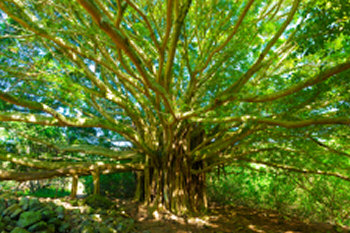 A
creation narrative is a story that explains how the earth and mankind came to be
long before the scientific revolution offered scientific explanations.
Explanations for lunar eclipses, seasonal changes, storms, and even life and
death in ancient times were often left up to these stories instead of science.
Their purpose was to give early humans a sense of identity as well as direction.
Arguing the bible from a anthropological aspect the Book of Genesis is nothing
more than a creation narrative. It provides an explanation for the
creation of the earth, man, the universe, and even the internal struggle of good
and evil inherent in every man and woman that wishes to follow a Christian path.
Creation narratives also provide for cultural continuity where cultures with
similar belief structures will be more likely to trade and integrate their
cultures if they have similar beliefs. An important notion is that
although we may have our own unique belief of how things came to be, we all
share one fundamental similarity: the need to have these foundational questions
answered. As various creation myths are depicted you will see how
different they are, but they have similarities when it comes to what questions
they attempt to answer. A
creation narrative is a story that explains how the earth and mankind came to be
long before the scientific revolution offered scientific explanations.
Explanations for lunar eclipses, seasonal changes, storms, and even life and
death in ancient times were often left up to these stories instead of science.
Their purpose was to give early humans a sense of identity as well as direction.
Arguing the bible from a anthropological aspect the Book of Genesis is nothing
more than a creation narrative. It provides an explanation for the
creation of the earth, man, the universe, and even the internal struggle of good
and evil inherent in every man and woman that wishes to follow a Christian path.
Creation narratives also provide for cultural continuity where cultures with
similar belief structures will be more likely to trade and integrate their
cultures if they have similar beliefs. An important notion is that
although we may have our own unique belief of how things came to be, we all
share one fundamental similarity: the need to have these foundational questions
answered. As various creation myths are depicted you will see how
different they are, but they have similarities when it comes to what questions
they attempt to answer.
Hindu Creation Narrative
 The
religion of Hindu is one of the world's oldest religions with over four thousand
years of tradition and practice. The belief that the world we exist in
today is not the first universe nor will it be the last is a central theme to
the Hindu creation narrative. According to Hindus there will be many
earths as well as many different universes. A sense of a dynamic and ever
changing conception of what is and what will be is fundamental to the Hindu
religion. There is no real supreme creator, but supreme power is comprised of
three deities working together. Lord Brahma the creator, Lord Shiva the
destroyer, and Lord Vishnu the preserver work together to bring about the end of
an existing universe followed by the birth of a new one. In Hinduism it is
believed that in order to create something, something else must be destroyed.
All three supreme powers
share the power to create in the sense that they work together during the entire
process of creation. With the destruction of an old universe there is
nothing but an empty ocean left. On top of this great lifeless ocean is a great
serpent called Ananta where scholars claim Lord Vishnu rides floating on the ocean. A sprouting lotus flower rooted in Vishnu's naval blossoms
into what is believed to be Lord Brahma the creator. Doctrine suggests that
Brahma, alone in this new universe, becomes bored and lonely and divides it into
two creating man and woman. There is some debate as to whether it is from his
body parts or his entire being splitting, but the common belief is that all that
is to be in the new universe comes from Lord Brahma. This cycle will continue
forever with Lord Shiva destroying the current universe, Lord Vishnu again floating atop a lifeless ocean, and Lord Brahma creating all
that is to be in the new universe. The
religion of Hindu is one of the world's oldest religions with over four thousand
years of tradition and practice. The belief that the world we exist in
today is not the first universe nor will it be the last is a central theme to
the Hindu creation narrative. According to Hindus there will be many
earths as well as many different universes. A sense of a dynamic and ever
changing conception of what is and what will be is fundamental to the Hindu
religion. There is no real supreme creator, but supreme power is comprised of
three deities working together. Lord Brahma the creator, Lord Shiva the
destroyer, and Lord Vishnu the preserver work together to bring about the end of
an existing universe followed by the birth of a new one. In Hinduism it is
believed that in order to create something, something else must be destroyed.
All three supreme powers
share the power to create in the sense that they work together during the entire
process of creation. With the destruction of an old universe there is
nothing but an empty ocean left. On top of this great lifeless ocean is a great
serpent called Ananta where scholars claim Lord Vishnu rides floating on the ocean. A sprouting lotus flower rooted in Vishnu's naval blossoms
into what is believed to be Lord Brahma the creator. Doctrine suggests that
Brahma, alone in this new universe, becomes bored and lonely and divides it into
two creating man and woman. There is some debate as to whether it is from his
body parts or his entire being splitting, but the common belief is that all that
is to be in the new universe comes from Lord Brahma. This cycle will continue
forever with Lord Shiva destroying the current universe, Lord Vishnu again floating atop a lifeless ocean, and Lord Brahma creating all
that is to be in the new universe.
Australian Aboriginal Creation Narrative
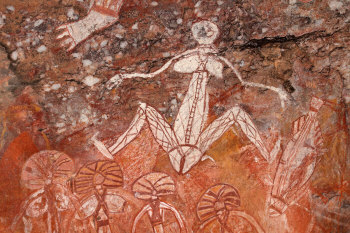 One
of the oldest surviving cultures on earth are those comprised of the native peoples of Australia. Known as dreamtime stories and acted out in ceremonies, they are focused around a
similar concept central to the Hindu narrative. There was nothingness, just land no
animals no people, no plants or trees. Then a supreme maker known as Baiame who
was
commonly known as the creator of many things, brought many different things
together in one place. Some things looked like men and woman, some like nothing they had ever
seen before. With the growing diversity there was growing hostility and tension. Wars, battles, and arguments soon plagued the once peaceful land. These hostile
interactions were so dynamic that the very shape and makeup of the land was
forever changed. Whenever animals or people did something wrong they were
punished by a great rainbow snake that would make rivers, swallow the wrongdoers
whole, and spit their remains out making hills and stones. The way the sun came
to be is described by a fight between the emu's ancestor and the eagle. The story says that the
eagle stole an emu's egg and threw it into the sky. As it flew up into the air
it burst into flames, and the fire was forever soaked by Baiame creating the
sun. Due to the secretive nature of the Australian aborigine culture it is hard
to get a consistent creation narrative, but this serves as a more popular
rendition of a creation myth from Australian aborigines. One
of the oldest surviving cultures on earth are those comprised of the native peoples of Australia. Known as dreamtime stories and acted out in ceremonies, they are focused around a
similar concept central to the Hindu narrative. There was nothingness, just land no
animals no people, no plants or trees. Then a supreme maker known as Baiame who
was
commonly known as the creator of many things, brought many different things
together in one place. Some things looked like men and woman, some like nothing they had ever
seen before. With the growing diversity there was growing hostility and tension. Wars, battles, and arguments soon plagued the once peaceful land. These hostile
interactions were so dynamic that the very shape and makeup of the land was
forever changed. Whenever animals or people did something wrong they were
punished by a great rainbow snake that would make rivers, swallow the wrongdoers
whole, and spit their remains out making hills and stones. The way the sun came
to be is described by a fight between the emu's ancestor and the eagle. The story says that the
eagle stole an emu's egg and threw it into the sky. As it flew up into the air
it burst into flames, and the fire was forever soaked by Baiame creating the
sun. Due to the secretive nature of the Australian aborigine culture it is hard
to get a consistent creation narrative, but this serves as a more popular
rendition of a creation myth from Australian aborigines.
Christian Creation Narratives
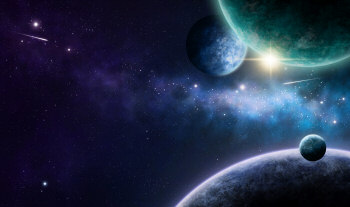 The
fundamental creation narrative for Christianity is found in the book of Genesis. The themes are similar when it comes to how there was nothingness and then a supreme creator
made all things in the universe. In Christianity the supreme creator is known as an almighty God
who according to the Book of Genesis, created man, woman, and everything in the
universe. Believing this story as actual fact is the root of all controversy
between religious people. On one side of the argument the story serves as
a metaphorical account of God's power and not a actual record of events. There are religious people who strongly believe that the bible is in fact The
Word, the actual word, of God. Christians
see this account as either a literal or a metaphorical account of events
finding themselves on different sides of the evolutionary debate based on how they interpret this creation myth. Found in Genesis I and II of
the old testament, creation is described as a seven day process. The
famous statement, "Let there be light" can be found in the Book of
Genesis. The
earth according to biblical accounts was shrouded in darkness and nothingness. Without God there would be no day, no night, human beings or any living
things. God creates everything that makes up the universe and lastly
creates man in his own likeness. This account of how the world came to be
is drastically different than the story science tells us. The
fundamental creation narrative for Christianity is found in the book of Genesis. The themes are similar when it comes to how there was nothingness and then a supreme creator
made all things in the universe. In Christianity the supreme creator is known as an almighty God
who according to the Book of Genesis, created man, woman, and everything in the
universe. Believing this story as actual fact is the root of all controversy
between religious people. On one side of the argument the story serves as
a metaphorical account of God's power and not a actual record of events. There are religious people who strongly believe that the bible is in fact The
Word, the actual word, of God. Christians
see this account as either a literal or a metaphorical account of events
finding themselves on different sides of the evolutionary debate based on how they interpret this creation myth. Found in Genesis I and II of
the old testament, creation is described as a seven day process. The
famous statement, "Let there be light" can be found in the Book of
Genesis. The
earth according to biblical accounts was shrouded in darkness and nothingness. Without God there would be no day, no night, human beings or any living
things. God creates everything that makes up the universe and lastly
creates man in his own likeness. This account of how the world came to be
is drastically different than the story science tells us.
Scientific Accounts and Creation Narratives
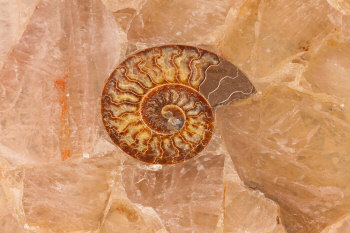 According
to most scientists the earth is over four billion years old and is the result of
the iron catastrophe theorem as well as the nebular hypotheses. The
earth's dynamic changes are explained scientifically by the iron catastrophe
theorem, and the solar system along with the universe explained by the nebular
hypotheses. The earth
is the outcome of billions of years of dynamic change and for most of its early
existence was completely inhabitable to living things. The seas were
comprised of methane, the atmosphere toxic, and the weather was extremely violent
with constant storms. Only through plate tectonic shifts, volcanic
activity, and the eventual cooling of the earth was life even possible on our
planet. Through evolution and adaptation over hundreds of millions of years, the
world was shaped and even today it is constantly changing. Science teaches
us that the mountains are a product of plate tectonic activity and not the
creation of some divine being, which is demonstrated by examining the Earth's
vast fossil record. This account of how the world has become
the way it is today is from a planetary geological perspective and is shared by members of the scientific community. This
account is drastically different than how a Christian creationist believes. According
to most scientists the earth is over four billion years old and is the result of
the iron catastrophe theorem as well as the nebular hypotheses. The
earth's dynamic changes are explained scientifically by the iron catastrophe
theorem, and the solar system along with the universe explained by the nebular
hypotheses. The earth
is the outcome of billions of years of dynamic change and for most of its early
existence was completely inhabitable to living things. The seas were
comprised of methane, the atmosphere toxic, and the weather was extremely violent
with constant storms. Only through plate tectonic shifts, volcanic
activity, and the eventual cooling of the earth was life even possible on our
planet. Through evolution and adaptation over hundreds of millions of years, the
world was shaped and even today it is constantly changing. Science teaches
us that the mountains are a product of plate tectonic activity and not the
creation of some divine being, which is demonstrated by examining the Earth's
vast fossil record. This account of how the world has become
the way it is today is from a planetary geological perspective and is shared by members of the scientific community. This
account is drastically different than how a Christian creationist believes.
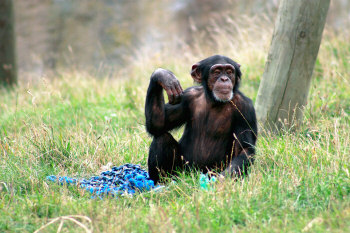 Such debate has caused division among Americans where parents do not want their
children taught evolution, and others do not want them taught creationism.
Currently in the charter school program, deciding whether creationism or evolution is to be taught
is the source of controversy. Others argue maybe both should to be taught,
and the question of who should teach creationism has led many parents to put
their children in private Christian schools or charter schools. Charter
schools as well as private Christian schools have seen a huge increase of new
students due to the growth of the neo-Christian movement. Some Christians
believe that the account depicted in Genesis is an actual account of events and
not a creation narrative as it should. This is believed to
be the source of the lack of continuity in the scientific curriculum in schools across the
country. Such debate has caused division among Americans where parents do not want their
children taught evolution, and others do not want them taught creationism.
Currently in the charter school program, deciding whether creationism or evolution is to be taught
is the source of controversy. Others argue maybe both should to be taught,
and the question of who should teach creationism has led many parents to put
their children in private Christian schools or charter schools. Charter
schools as well as private Christian schools have seen a huge increase of new
students due to the growth of the neo-Christian movement. Some Christians
believe that the account depicted in Genesis is an actual account of events and
not a creation narrative as it should. This is believed to
be the source of the lack of continuity in the scientific curriculum in schools across the
country.
The
evidentiary sources of evolution are found in the fossil record and by using the
scientific method that relies on facts instead of stories. The sources of all
creation narratives are religious doctrine that were orally
passed down through story telling. Even the bible, before it was recorded using
the written word, was
nothing more than oral tradition passed from one generation to another. Where do
you weigh in on the extremely important national debate regarding creationism
and evolutionism? Do your beliefs stem
from science and experience, or from religious dogma?
If you had to pick a side, which side would you pick and why?
Nature
Top Lists:
15 Fascinating Facts about the Amazon Rainforest
15 Remarkable Facts About Bacteria
15 Remarkable Facts About Jellyfish
15 Little Known Facts About Elephants
15 Fascinating Facts about Earthquakes
15 Odd And Interesting Facts about Monkeys
Top 15 Myths about Snakes
Top 15 Myths about Horses
Top 15 Creepy Deep Sea Creatures
15 Unexpected Animals That Can Kill You Quickly
Top 15 Spider Myths
15 Beautiful Animals that are Now Extinct
Top 15 Most Amazing Snakes Around the World
15 Fascinating Facts about Snow
Top 15 of the World's Rarest Flowers
10 Most Emotional Animals
15 of the Most Venomous Creatures to Roam the Earth
15 Unusual Animal Defense Mechanisms
15 Unusual and Less Known Uses of Rocks
15 Unique Forest Creatures Less Known To Man
15 Interesting Facts About Time
15 Unknown Parasites You Never Knew Existed
15 Weird Trees Around The World
15 Wild Animals Deadly to Humans
15 Exotic Insects That Are Harmful & Deadly
15 Ridiculous Uses for Gold
Informational:
Preparing for a Disaster
Proof That We Are What We Are!
What is the Meaning of Life?
The Trend and Challenges Facing the Urban World
Creation Narratives and the Evolution Creationist Debate |